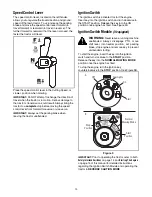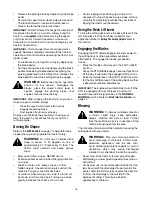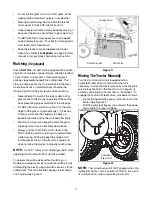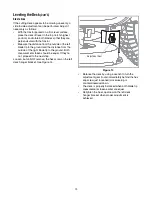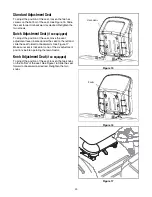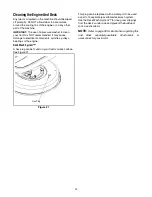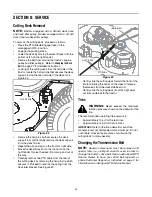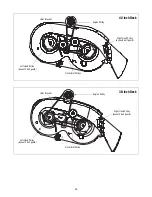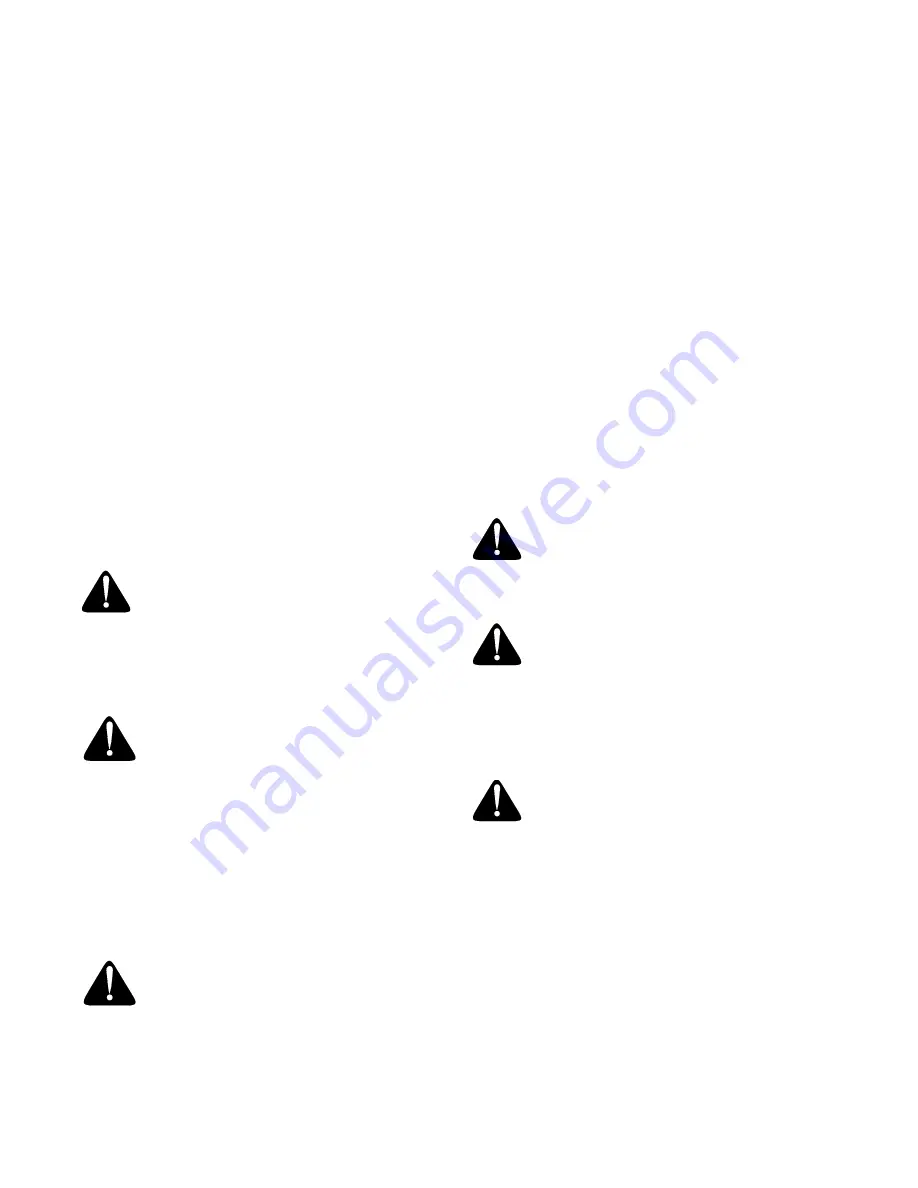
26
Battery
The battery is sealed and is maintenance-free. Acid
levels cannot be checked.
•
Always keep the battery cables and terminals clean
and free of corrosive build-up.
•
After cleaning the battery and terminals, apply a
light coat of petroleum jelly or grease to both
terminals.
•
Always keep the rubber boot positioned over the
positive terminal to prevent shorting.
IMPORTANT:
If removing the battery for any reason,
disconnect the NEGATIVE (Black) wire from it’s
terminal first, followed by the POSITIVE (Red) wire.
When re-installing the battery, always connect the
POSITIVE (Red) wire its terminal first, followed by the
NEGATIVE (Black) wire. Be certain that the wires are
connected to the correct terminals; reversing them
could change the polarity and result in damage to your
engine’s alternating system.
Charging
If the tractor has not been put into use for an extended
period of time, charge the battery with an automotive-
type 12-volt charger for a minimum of
one hour at six
amps
.
WARNING:
Batteries give off an explosive
gas while charging. Charge battery in a well
ventilated area and keep away from an open
flame or pilot light as on a water heater, space
heater, furnace, clothes dryer or other gas
appliances.
Jump Starting
WARNING:
When removing or installing
the battery, follow these instructions to
prevent the screwdriver from shorting against
the frame.
IMPORTANT:
Never jump your tractor’s dead battery
with the battery of a running vehicle.
•
Connect end of one jumper cable to the positive
terminal of the good battery, then the other end to
the positive terminal of the dead battery.
•
Connect the other jumper cable to the negative
terminal of the good battery, then to the
frame of
the unit with the dead battery
.
WARNING:
Failure to use this procedure
could cause sparking, and the gas in either
battery could explode.
Cleaning
Clean the battery by removing it from the tractor and
washing with a baking soda and water solution. If
necessary, scrape the battery terminals with a wire
brush to remove deposits. Coat terminals and exposed
wiring with grease or petroleum jelly to prevent
corrosion.
Battery Failures
Some common causes for battery failure are:
• freezing
• undercharging
• overcharging
• corroded connections
These failures are NOT covered by your tractor’s
warranty.
Fuse
One 20 AMP fuse is installed in your tractor’s wiring
harness to protect the tractor’s electrical system from
damage caused by excessive amperage.
If the electrical system does not function, or your
tractor’s engine will not crank, first check to be certain
that the fuse has not blown. It can be found under the
hood mounted behind the dash panel on the right side.
WARNING:
Always use a fuse with the
same amperage capacity for replacement.
Cutting Blades
WARNING:
Be sure to shut the engine off,
remove ignition key, disconnect the spark plug
wire(s) and ground against the engine to
prevent unintended starting before removing
the cutting blade(s) for sharpening or
replacement. Protect your hands by using
heavy gloves or a rag to grasp the cutting
blade.
WARNING:
Periodically inspect the blade
spindles for cracks or damage, especially if
you strike a foreign object. Replace
immediately if damaged
.
The blades may be removed as follows.
•
Remove the deck from beneath the tractor, (refer to
Cutting Deck Removal
on page 24) then gently flip the
deck over to expose its underside.
•
Place a block of wood between the center deck
housing baffle and the cutting blade to act as a
stabilizer. See Figure 24.
•
Use a 15/16" wrench to remove the hex flange nut
that secures the blade to the spindle assembly. See
Figure 24.
Summary of Contents for 791
Page 29: ...29 NOTES ...
Page 30: ...30 NOTES ...


